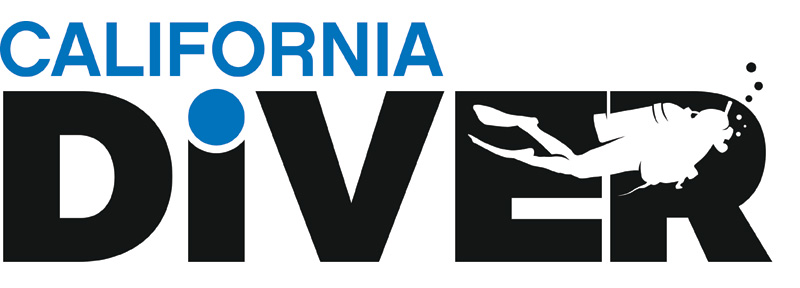Suspension exercises help divers establish endurance, strength, balance, and torso flexibility for both high energy and passive activities in changing environments above and below. One of the best ways to develop strength with a sensation of suspension similar to the experience of scuba diving is to train with cables or body weight trainers such as TRX® or CrossCore 180®. The equipment is portable, adjustable, and depending on the fitness level of the individual, seated, standing, single extremity, or double grip positions may be done almost anywhere simply by attaching the apparatus to a tower or tree. Variations of intensity can be achieved by changing the angle of the body from standing straight vertical to leaning away to create more resistance. Advanced exercises such as suspended push-ups are nearly parallel to the ground.
Words & Photos by Gretchen Ashton, ScubaFit
Proper Form A good starting position is best posture with legs straight, joints slightly relaxed – not locked, and abdominals contracted. Check grip strength before releasing full body weight and always keep the thumbs wrapped around the handles. Keep tension on the muscles and avoid hanging, jolting, or over-extending the joints. On these exercises inhale while moving into the exercise and exhale on the return controlling breathing.
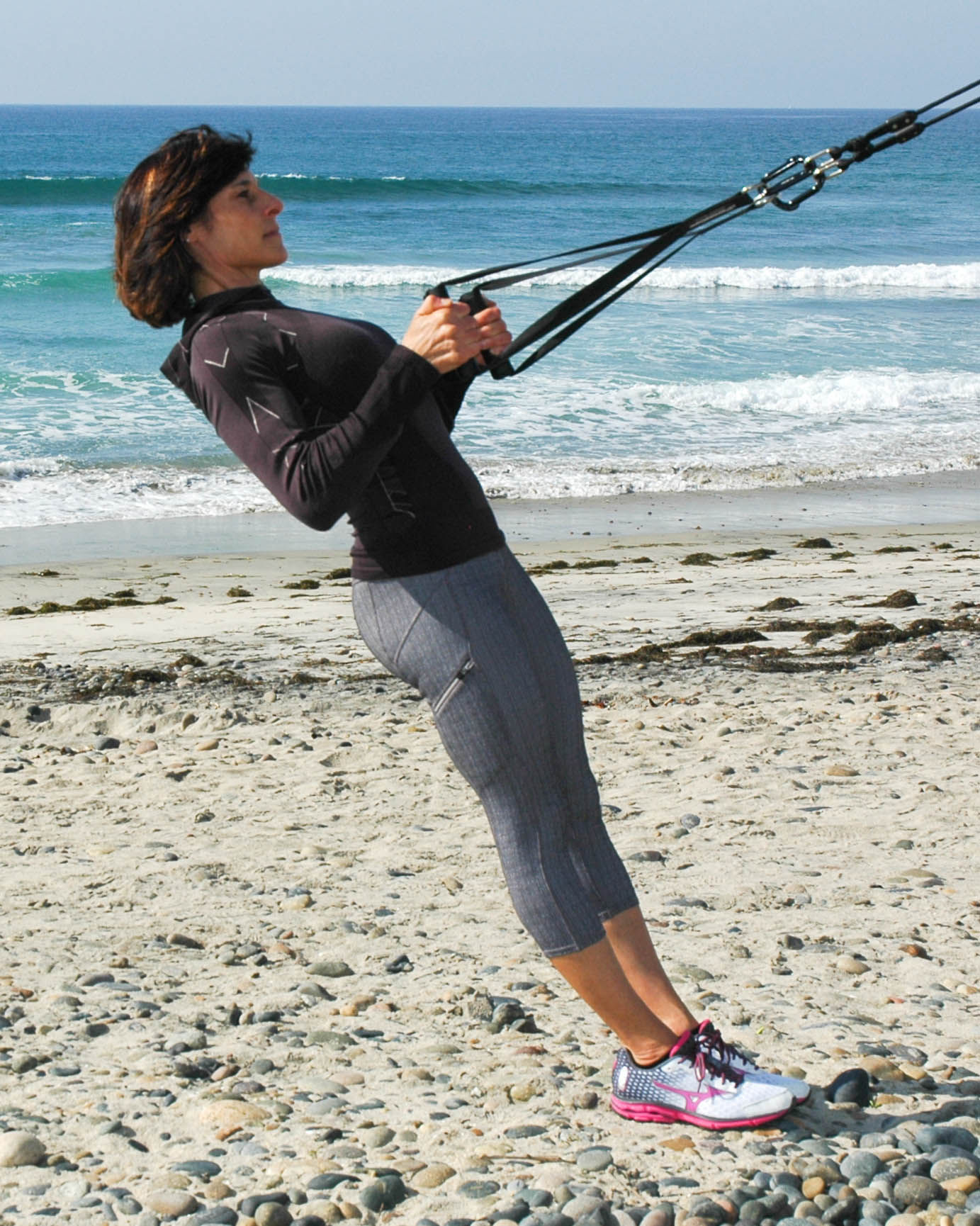
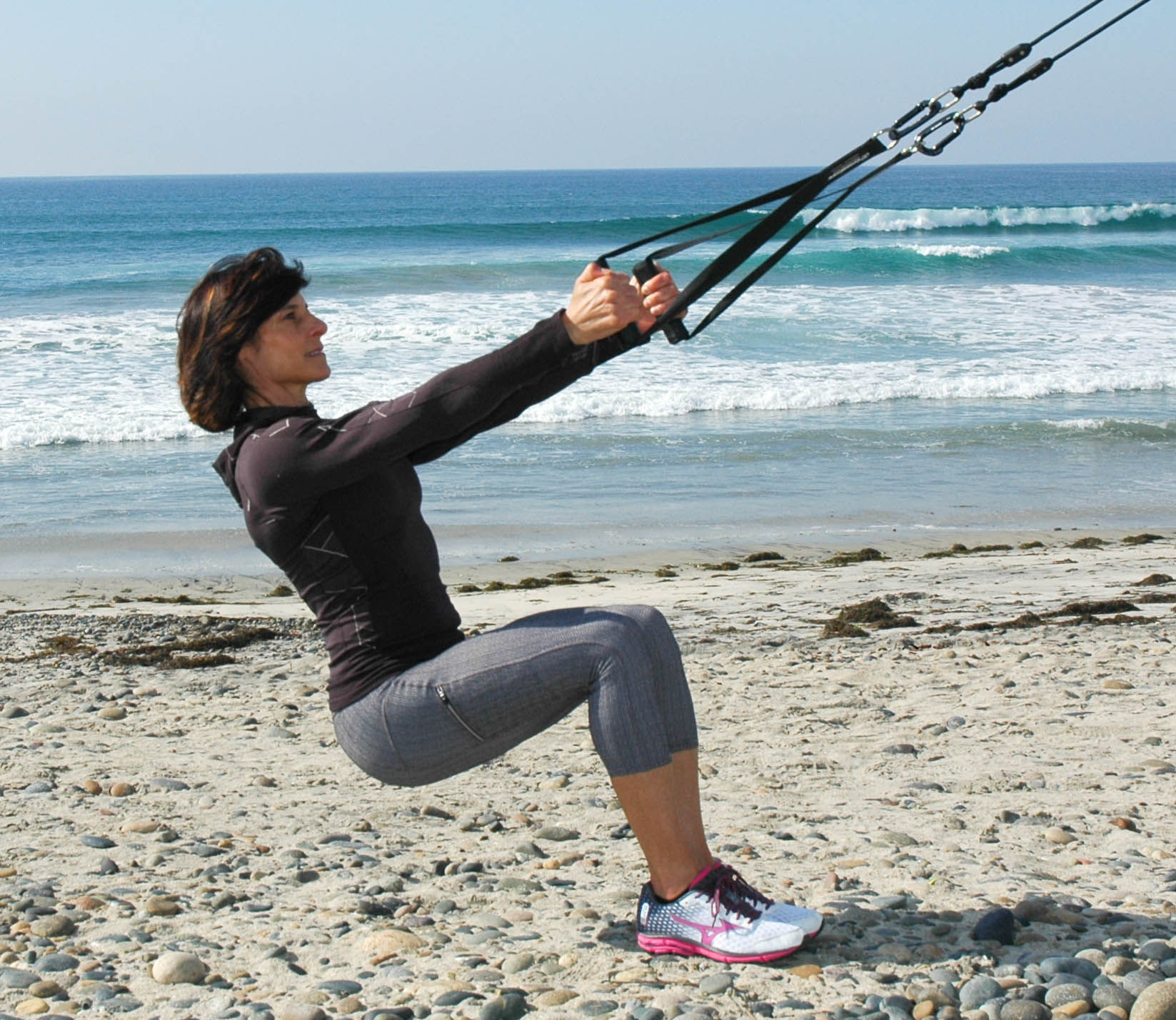

Suspension Squats A squat of any type is truly a total-body strengthening exercise. When performing suspension squats, the legs and buttocks are emphasized. To perform a suspension squat, begin with proper form, arms along the sides of the torso, and simply sit back as if on an imaginary chair. The finished position is when shoulders, hips, and knees are at right angles (90 degrees). There is no need to drop lower. Squeeze the buttocks (glutes) tightly to drive the torso up into a standing position. Let the biceps on the front of the arms and the triceps on the back of the arms be assisting muscles, alternating roles on the way up and down.
Suspension Pistons A fun and challenging modification to the squat is called a piston. The same movement on one leg at a time. Start in a seated position of the squat with both feet on the ground, then extend one leg at the knee, and stand on one leg.
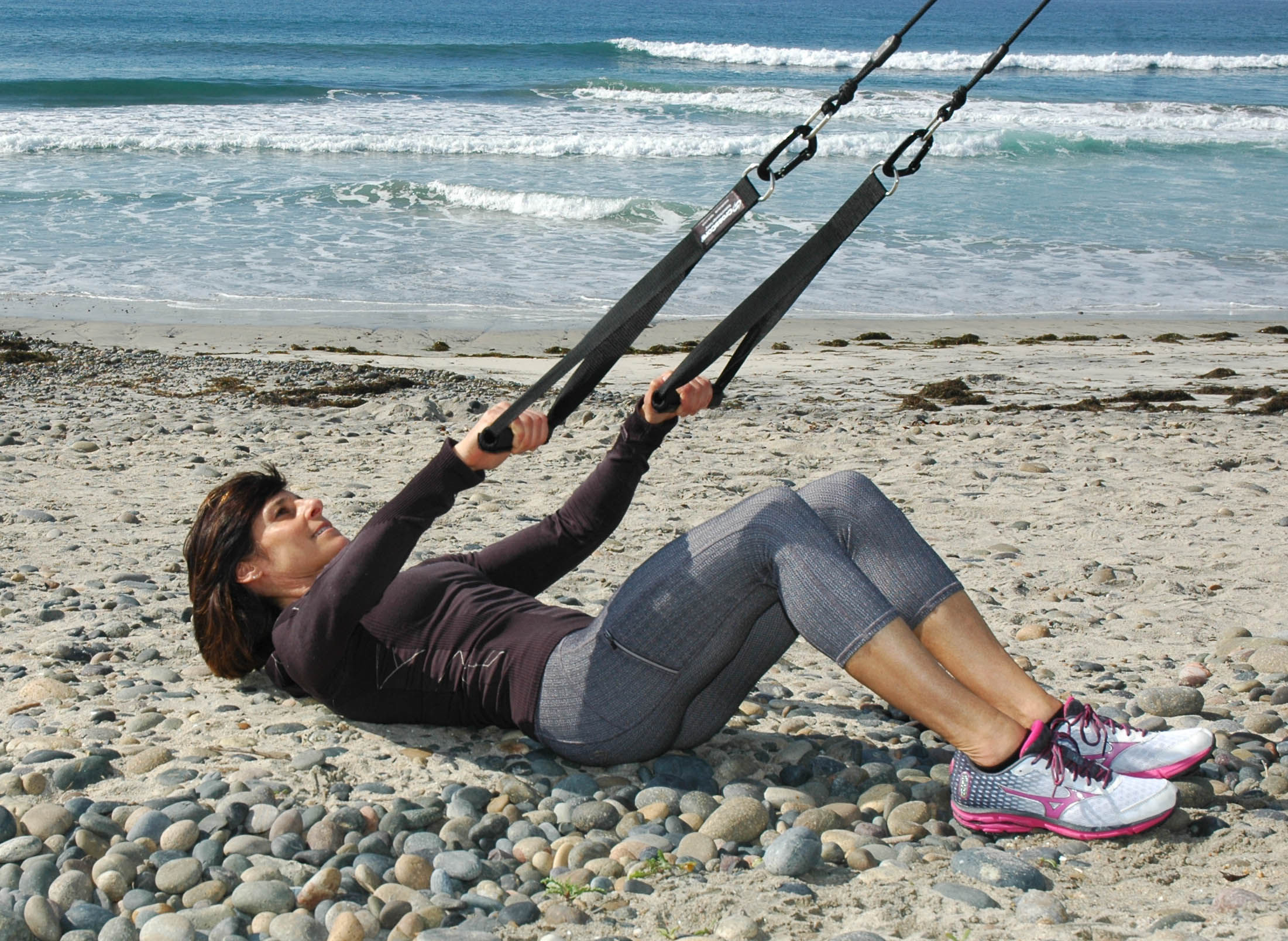
Suspension Rows – Seated Rows to strengthen the back, rear deltoids of the shoulders, and biceps may be performed from a standing or seated position. Again use right angles of the joints as a guide. Start at the top with arms at right angles to the sides of the body, and slowly release the row by extending the elbow joints. When the arms are nearly straight without over-extending the elbows, pause without touching the ground to maintain body weight resistance. Contract the abdominals if they have relaxed and pull the upper body back to the starting position.
About Functional Fitness
Suspension training is a good way to establish functional fitness. Functional fitness was initially defined and accepted as exercise that strictly enhances the activities of daily living such as standing, sitting, reaching, loading groceries, lifting children, mowing the lawn and house cleaning. Functional exercise was generally used in rehabilitation, physical therapy, and exercise programs for beginners or the unfit.
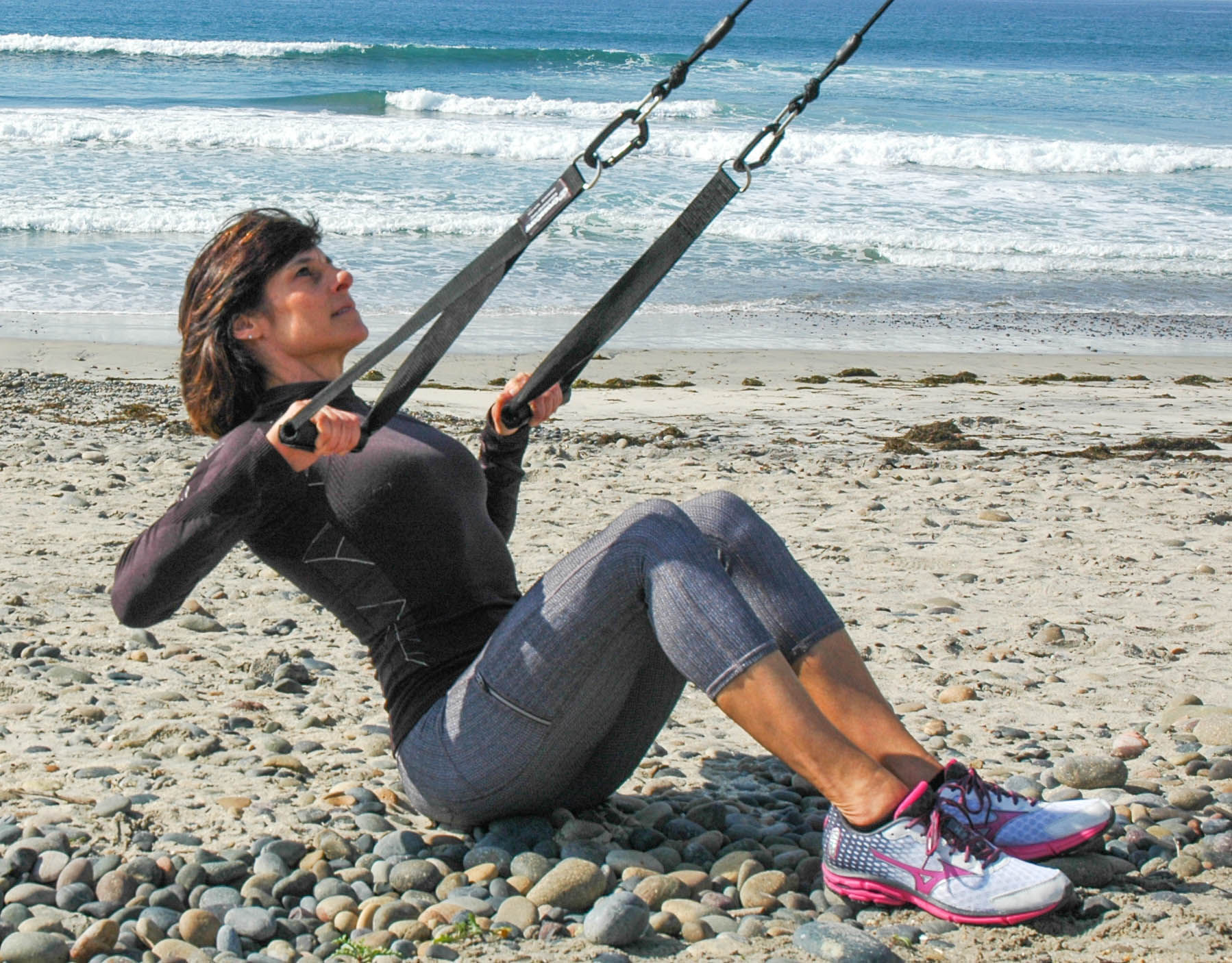
More recent fitness trends reveal the term “functional” is also being used to describe sport specific training. One would think this is because of the undeniable total body results of the compound and closed chain exercises utilized in foundational programs. However, many practitioners mistakenly describe functional exercise as only body weight exercises done without a fitness machine, or programs such as boot camps which use small hand-held apparatus and plyometric workouts. Truly, functional exercises can be performed with or without fitness equipment. One example of a functional exercise using a machine is the leg press apparatus. It is the foundational exercise of choice for those who cannot safely perform squats with free weights.
Words & Photos by Gretchen Ashton, ScubaFit
In its purest form, criteria for functional exercise is based primarily in closed chain exercises and compound movements. Compound movements are exercises that require either sequential or simultaneous multiple joint action. Closed chain exercises describe movements where the distal end (furthest from the center of the body) of the limbs cannot move. For example, a squat is an exercise where the feet are on the ground and do not move during the exercise. The push up is an example of an upper body closed chain exercise as the hands are on the floor and do not move during the exercise.
Whether on a surfboard, wearing skis, holding a paddle, or loaded with dive gear, these exercises help create a level of comfort during movement when suspended in the air or underwater and during transition to gravity on the surface of the ocean or dry land.
For more information on getting fit for diving, ScubaFit
